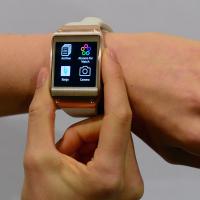Getting Started with Wearable Devices? Consider This Platform

Software development has undergone a series of major technological transformations over the past three decades. We saw the desktop revolution in the late ’80s, followed by the Internet revolution in the’90s, and finally the mobile revolution, which started in the mid-2000s and continues to evolve.
Of late, we’re also seeing a new type of revolution, aptly referred to as the “Internet of Things.” This term is, essentially, a broad description for a new commodity class of connected sensors and devices. One particularly fast-growing segment of the Internet of Things is wearable devices. At CES 2016, there were multiple vendors who demonstrated and introduced the latest innovations in fitness trackers, smart watches, and even connected apparel.
Despite the rising popularity of wearable devices, they do pose new challenges for software developers. Instead of powerful servers or even smartphones with large amounts of computational power, small sizes and low power consumption are often the most critical considerations for developing successful wearable devices and applications. In addition, instead of developing multiple applications to work on a single device, the emphasis is on developing very focused functionality on wearables and aggregating logic via smart phones and other wireless devices.
The DIY movement has led to a host of new platforms that offer developers options for creating wearable devices. One of the most popular is Arduino, which is open source and endorsed by a large user community. That said, Arduino-based solutions require C++ sketches combined with “glue code” in order to connect sensors with smart phones or computers, and they are not the smallest prototyping boards on the market.
By comparison, MbientLab’s MetaWear boards are small (about the size of a quarter) and include different sensors, such as an accelerometer and temperature sensor, as well as built-in Bluetooth LE. The boards can be programmed via an API for iOS and Android with connectors for other frameworks such as Node.js, Cordova, and Windows.
Whether developing applications for Android-based wearable devices, like Google Glass and Android Wear, or iOS-based ones, like Apple Watch, this platform provides a more direct route to getting started with wearable technologies and allows developers to create innovative devices and applications as quickly as possible.
Lance Gleason is presenting the tutorial Prototyping Wearable Devices Using Android and the session Prototype the Internet of Things with Javascript at the 2016 IoT Dev + Test conference. Learn more at https://iotdevtest.techwell.com.

